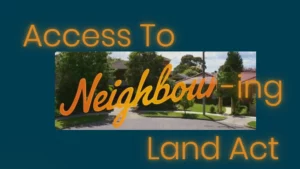Japanese Knotweed has been the subject of another Court decision this last month, before the Court of Appeal, this time in the case of Davies v Bridgend County Borough Council [2023 EWCA Civ 80]..
Interesting that this is a short trip down the M4 from the location of the Williams & Waistell v Network Rail case.
This appeal dealt with the interesting points of:
Interesting that this is a short trip down the M4 from the location of the Williams & Waistell v Network Rail case.
This appeal dealt with the interesting points of:
1. Recoverability of damages for diminution of value of a property
2. Causation where JKW pre-dated the Claimant owning the property
3. Quality of Evidence
4. How damages for DMV might be affected where the diminution was due to diminish over time
Reference to the Judgment of the Court of Appeal is made within the text below, using the wording of the judgment for accuracy.
2. Causation where JKW pre-dated the Claimant owning the property
3. Quality of Evidence
4. How damages for DMV might be affected where the diminution was due to diminish over time
Reference to the Judgment of the Court of Appeal is made within the text below, using the wording of the judgment for accuracy.
The facts in the Davies case
The facts in this case were that Mr Davies purchased the property in Bridgend back in 2004 as an investment property to rent-out. The property is adjacent to land owned by the Bridgend County Borough Council. In 2017 Mr Davies became concerned about JKW on the Council’s land and in 2019 complained about it to the Council. Although the Council had been aware of the presence of the knotweed from at least 2013, there was a delay in them starting to treat with that treatment not starting until 2018.
The Court initially found, following their interpretation of Williams v Network Rail, that the Claimant’s claim for diminution of value of the property could not succeed as there was no physical damage caused by the knotweed so this was an irrecoverable claim as it was for what is called a ‘pure economic loss’. You cannot claim legal damages to compensate you for a financial loss only (a purely economic loss).
The Claimant appealed on the grounds that the Williams case had been incorrectly interpreted.
This appeal was eventually heard by the Court of Appeal. Interestingly the Court of Appeal hearing is now streamed on YouTube so if you want to see what that looks like then click here – Davies (claimant/appellant) v Bridgend County Borough Council (defendant/respondent) – YouTube
The amount of the diminution in value of the Claimant’s property was £4,900. Whilst all concerned acknowledged that this was an extremely modest amount and the legal costs of disputing this would far outweigh the amount itself, it was set out by the Court of Appeal that this point was an important one to consider due to the number of JKW cases around.
5 points were discussed in terms of the principles of nuisance:
The Court initially found, following their interpretation of Williams v Network Rail, that the Claimant’s claim for diminution of value of the property could not succeed as there was no physical damage caused by the knotweed so this was an irrecoverable claim as it was for what is called a ‘pure economic loss’. You cannot claim legal damages to compensate you for a financial loss only (a purely economic loss).
The Claimant appealed on the grounds that the Williams case had been incorrectly interpreted.
This appeal was eventually heard by the Court of Appeal. Interestingly the Court of Appeal hearing is now streamed on YouTube so if you want to see what that looks like then click here – Davies (claimant/appellant) v Bridgend County Borough Council (defendant/respondent) – YouTube
The amount of the diminution in value of the Claimant’s property was £4,900. Whilst all concerned acknowledged that this was an extremely modest amount and the legal costs of disputing this would far outweigh the amount itself, it was set out by the Court of Appeal that this point was an important one to consider due to the number of JKW cases around.
5 points were discussed in terms of the principles of nuisance:
1. Private nuisance is a violation of ‘real property’ rights. This is either interference with legal right of an owner of interference with the amenity of the land
2. The law of nuisance needs to adapt to accommodate new social scenarios. What’s needed is one of:
a. Encroachment
b. Direct physical injury
c. Interference with quiet enjoyment.
3. Damage is always essential point for the tort of nuisance but in the case of interference with amenity, physical damage is not necessary to complete the cause of action
4. Nuisance can be caused by an inaction or omission so an occupier can be liable for a continuing nuisance if, with knowledge, they fail to take reasonable steps to bring the nuisance to an end
5. Reasonableness between neighbours as in the Delaware Mansions v Westminster tree root subsidence case
2. The law of nuisance needs to adapt to accommodate new social scenarios. What’s needed is one of:
a. Encroachment
b. Direct physical injury
c. Interference with quiet enjoyment.
3. Damage is always essential point for the tort of nuisance but in the case of interference with amenity, physical damage is not necessary to complete the cause of action
4. Nuisance can be caused by an inaction or omission so an occupier can be liable for a continuing nuisance if, with knowledge, they fail to take reasonable steps to bring the nuisance to an end
5. Reasonableness between neighbours as in the Delaware Mansions v Westminster tree root subsidence case
The Appeal to the Court of Appeal
1. DMV recoverability – The Claimant’s appeal on the recoverability of damages for diminution in value of the property. The Court of Appeal disagreed with the lower Court’s interpretation of the Williams case and said that where there is a non trivial encroachment of JKW onto the claimant’s land from the Defendant’s land, that affects the amenity value of the claimant’s land then that amounts to a damage and is recoverable.
2. Causation – The Defendant’s responded on the notice/causation point. They argued that the reduction in value left after the JKW had been treated in 2018 cannot have been caused by the breach in nuisance because the JKW encroachment had already occurred before their breach (their breach being the delay of 5 years in treating the JKW). This was where the tree root subsidence case of Delaware Mansions v Westminster was considered. That was a nuisance case involving the encroachment of tree roots rather than of JKW. There was a similar situation in that case as the damage to Delaware Mansions occurred before the Claimant purchased the property and the Claimant failed to show that any damage was needed as a result of new damage which occurred after they’d become owners. However, in that case that argument did not succeed as the Court held the fact that encroachment was historic was no answer where there was a continuing breach of duty as a result of a persisting encroachment. Therefore 5 year delay in treating the JKW there was a harm to the quiet enjoyment and amenity which persisted in 2018 because the nuisance was a continuing one. Harm therefore caused by the breach of duty
3. Quality of evidence/Reduction of DMV over time – the Defendant attached the Claimant’s evidence of Mr Raine but, critically, failed to provide their own counter evidence. They wanted to argue that the ongoing effect on the value of the property would diminish in time due to the treatment from 2018 but failed to provide evidence to support that so, whilst that might have been a good argument (and reference made to the case of Dennis v MOD where a % of the DMV was awarded even though the nuisance had a set end date) they failed to provide evidence on that point so the full DMV was awarded.
Interesting to see this second decision in February 2023 on the law of nuisance. A great clarifying judgment on diminution in value of a property blighted by Japanese knotweed and reference to the Delware Mansions case showing how the law of encroachment of tree root and JKW rhizomes aligns in the law.
If you have any cause of concern over a diminution in value of your property as a result of a legal nuisance then we would be happy to discuss that with you.
If you have any cause of concern over a diminution in value of your property as a result of a legal nuisance then we would be happy to discuss that with you.



